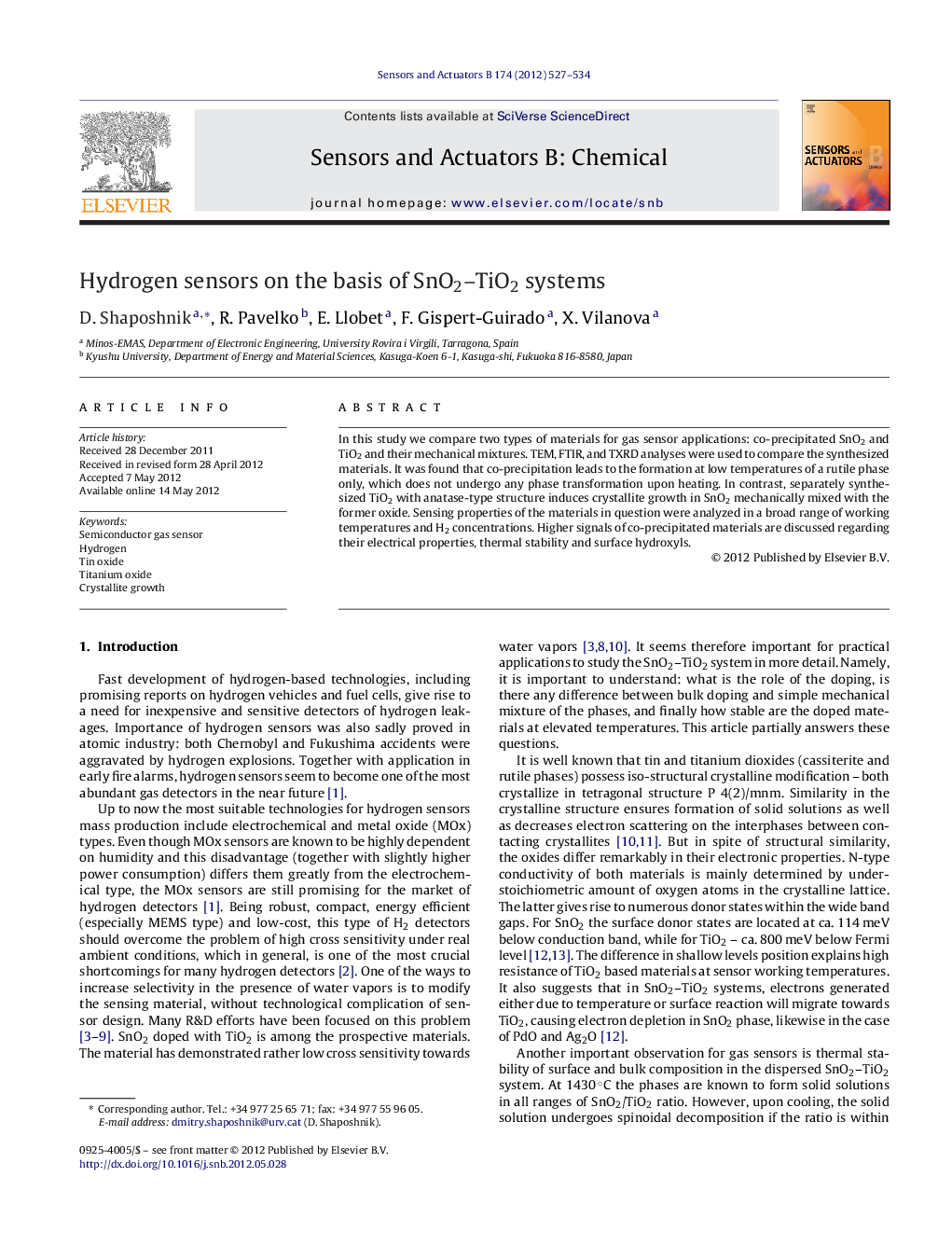| Article ID | Journal | Published Year | Pages | File Type |
|---|---|---|---|---|
| 743363 | Sensors and Actuators B: Chemical | 2012 | 8 Pages |
In this study we compare two types of materials for gas sensor applications: co-precipitated SnO2 and TiO2 and their mechanical mixtures. TEM, FTIR, and TXRD analyses were used to compare the synthesized materials. It was found that co-precipitation leads to the formation at low temperatures of a rutile phase only, which does not undergo any phase transformation upon heating. In contrast, separately synthesized TiO2 with anatase-type structure induces crystallite growth in SnO2 mechanically mixed with the former oxide. Sensing properties of the materials in question were analyzed in a broad range of working temperatures and H2 concentrations. Higher signals of co-precipitated materials are discussed regarding their electrical properties, thermal stability and surface hydroxyls.
